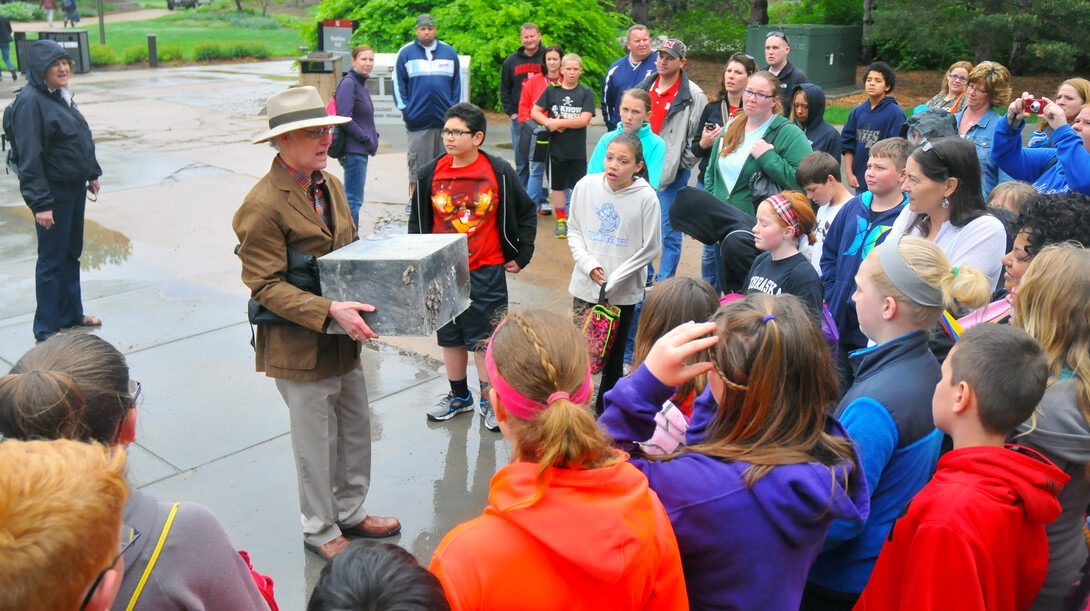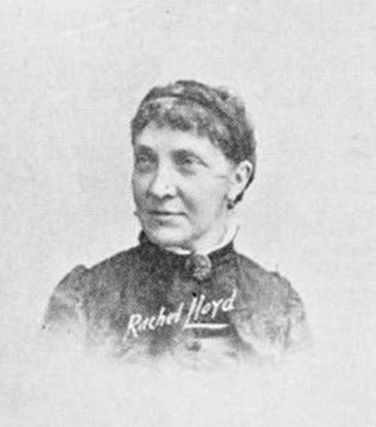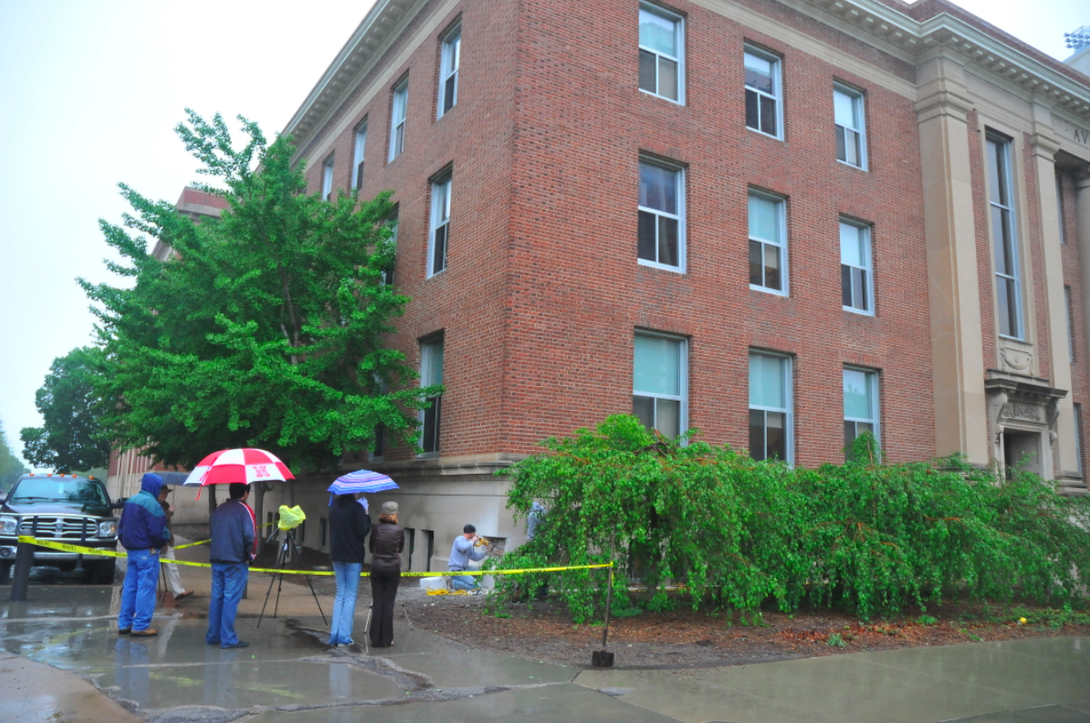
Mark Griep has uncovered a bit of chemistry history in the cornerstone of Avery Hall.
The stone, placed in 1916 during the construction of the building, held a time capsule that may contain a photo of Rachel Holloway Lloyd — the University of Nebraska’s second chemistry professor whose research helped launch sugar beet growing across the state.
Lloyd is to be featured in an American Chemical Society historical plaque that will be placed in Hamilton Hall. Griep, an associate professor of chemistry, hopes to incorporate items within the time capsule at an October celebration of Lloyd’s career.
A crew from Krivda and Son Masonry removed the time capsule — a roughly 18 inch wide by 12 inch tall copper box — in about two hours the morning of May 12.
“I’ve been telling people the story of Rachel Lloyd since 1998,” Griep said. “She is the first American woman to get a Ph.D. in chemistry. We believe she is also the first of two women to teach chemistry at a U.S. research university. And, in 1891, Lloyd became the second woman to join the American Chemical Society.
“She was a truly a pioneer in the field of chemistry.”
In the pursuit of the historical plaque, Griep has found only one photo of Lloyd — a portrait available in the University Archives. A 1916 newspaper article from the Red Cloud Chief might help expand the photo total.
“The article says the cornerstone contains a Cornhusker yearbook, a newspaper, a collection of chemicals and photographs of the chairs of chemistry and others,” Griep said. “Rachel Lloyd is included in the list of those photos. There’s a good chance the photo is the same one as in the University Archives, but we won’t know for sure until we open the box.”
James and Karen Linder are paying for the time capsule retrieval. James Linder is NU’s interim president and both have served as faculty at the University of Nebraska Medical Center.
The Linders cited their backgrounds in medicine and chemistry; Lloyd’s story; the importance of promoting women in science; and an interest in the career of H.G. Deming, a University of Nebraska chemistry professor in the 1920s to 1930s, as reasons for offering support to the cornerstone project.
“Opening up this time capsule that has been waiting for us for 98 years is just a fascinating event,” James Linder said. “And the story of Rachel Lloyd is equally amazing. She was the university’s second professor of chemistry at a time when there were not many women chemists. And the significance of her research into the beet industry set the framework for early Nebraska commercialization.
“Encouraging faculty to work with industry and create products is what the University of Nebraska is trying to today. Rachel Lloyd was doing this more than 100 years ago.”
Lloyd was a professor at the University of Nebraska in the early 1890s. At that time, sugar beets were a new crop in the United States. Nebraska farmers were interested in beets, but were unwilling to invest in a crop they knew little about.
Lloyd’s extensive research into beets — from sugar content to the type of soil chemistry needed to grow — provided the foundation from which the Nebraska’s sugar beet industry was launched. Within a few years of her research, sugar beets became one of Nebraska biggest crops.
For more information about Lloyd and her impact on chemistry and Nebraska farming, click here.
When Avery Hall opened in 1916, it was called the Chemistry Laboratory and home to the University of Nebraska’s department of chemistry. Chemistry is now located in Hamilton Hall.
Chris Krivda of Krivda and Son said the project will be completed with the placement of a new cornerstone later this summer.
The contents of the time capsule will remain secret until they are presented at the October celebration of Lloyd’s historic plaque.
“It’s going to be a difficult wait, but I think we can do it,” Griep said. “It will be exciting to incorporate these items into the celebration.”










